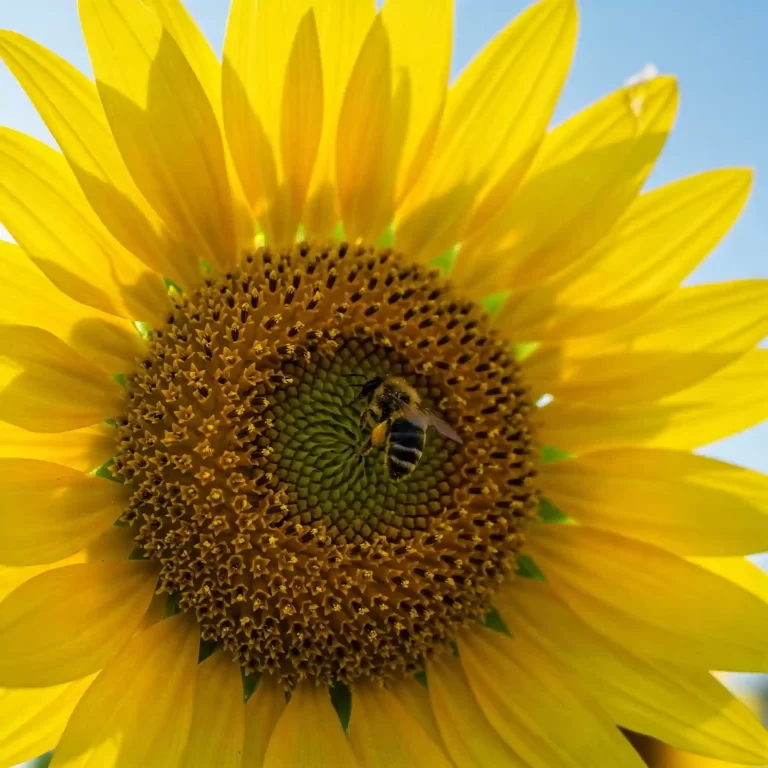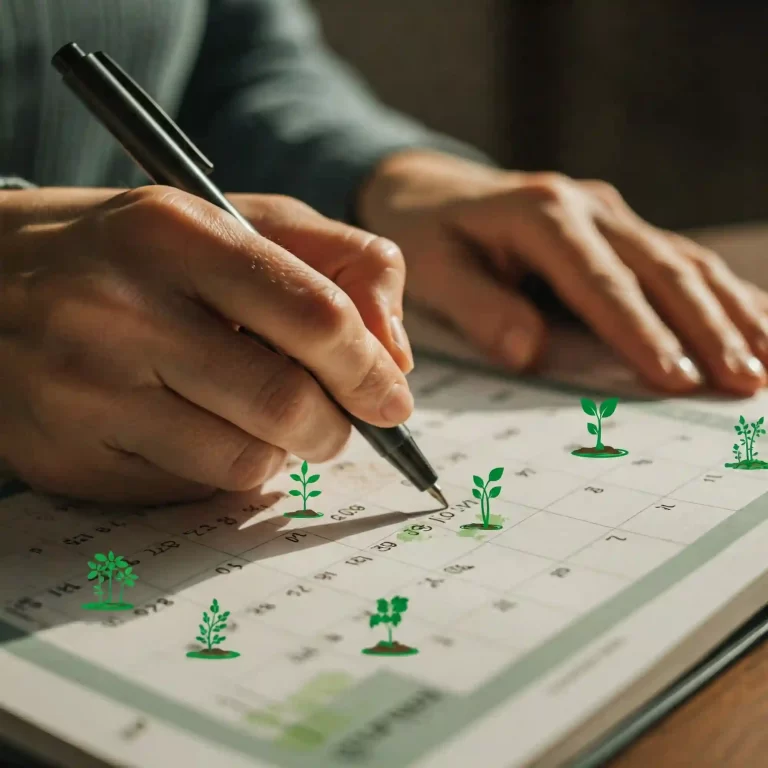| Key Takeaways |
|---|
| – An anchor chart is a visual aid that helps students remember important concepts or skills. |
| – A parts of a plant anchor chart is a type of anchor chart that shows the different parts of a plant and their functions. |
| – The parts of a plant are: seed, root, stem, leaf, flower, and fruit. |
| – You can make your own parts of a plant anchor chart using materials and tools such as paper, scissors, glue, markers, etc. |
| – Making your own parts of a plant anchor chart can benefit your learning and teaching by enhancing memory, comprehension, creativity, and engagement. |
| – You can use the parts of a plant anchor chart in various activities, such as quizzes, games, experiments, or projects. |
Do you know what a plant is? Do you know what the different parts of a plant are and what they do? Do you know how to make a visual aid that can help you learn and teach about plants? If you answered no to any of these questions, don’t worry. In this article, we will show you how to make your own parts of a plant anchor chart and why you should.
What is an Anchor Chart?
An anchor chart is a visual aid that helps students remember important concepts or skills. It is usually created by the teacher or the students together, and it is displayed in the classroom or at home for reference. An anchor chart can include text, images, diagrams, symbols, or anything else that can help explain or illustrate the topic. An anchor chart can be used for any subject or skill, such as math, science, language, art, etc.
What is a Parts of a Plant Anchor Chart?
A parts of a plant anchor chart is a type of anchor chart that shows the different parts of a plant and their functions. A plant is a living organism that can make its own food using sunlight, water, and carbon dioxide. Plants are essential for life on Earth, as they provide oxygen, food, medicine, and many other benefits. Plants come in many shapes, sizes, and colors, but they all have some common parts. These parts are:
- Seed: A seed is a small object that contains the embryo of a new plant. A seed can be planted in the soil or dispersed by animals, wind, or water. A seed can grow into a new plant when it gets the right conditions, such as water, light, and temperature.
- Root: A root is the part of a plant that grows underground. A root helps the plant to anchor to the soil and to absorb water and minerals from the soil. A root can also store food for the plant.
- Stem: A stem is the part of a plant that grows above the ground. A stem supports the plant and transports water, minerals, and food between the roots and the leaves. A stem can also have branches, buds, or thorns.
- Leaf: A leaf is the part of a plant that is usually green and flat. A leaf is the main organ for photosynthesis, which is the process of making food using sunlight, water, and carbon dioxide. A leaf can also release oxygen and water vapor into the air. A leaf can have different shapes, sizes, and edges.
- Flower: A flower is the part of a plant that is usually colorful and fragrant. A flower is the reproductive organ of the plant, which means that it can produce seeds or fruits. A flower can have different parts, such as sepals, petals, stamen, and pistil. A flower can also attract pollinators, such as bees, butterflies, or birds.
- Fruit: A fruit is the part of a plant that develops from a flower. A fruit contains seeds or nuts that can grow into new plants. A fruit can also be eaten by animals or humans. A fruit can have different shapes, sizes, and colors, such as apples, bananas, or tomatoes.
Here is a table that summarizes the parts of a plant and their functions:
| Part of a Plant | Function |
|---|---|
| Seed | Contains the embryo of a new plant |
| Root | Anchors the plant to the soil and absorbs water and minerals |
| Stem | Supports the plant and transports water, minerals, and food |
| Leaf | Makes food using sunlight, water, and carbon dioxide |
| Flower | Produces seeds or fruits |
| Fruit | Contains seeds or nuts that can grow into new plants |
How to Make Your Own Parts of a Plant Anchor Chart
Making your own parts of a plant anchor chart can be fun and easy. You will need some materials and tools, such as:
- A large sheet of paper or cardboard
- Scissors
- Glue
- Markers or crayons
- Optional: magazines, newspapers, or books with pictures of plants
Here are the steps to make your own parts of a plant anchor chart:
- Cut out the shape of a plant from the paper or cardboard. You can use any type of plant that you like, such as a flower, a tree, or a vegetable. You can also draw the shape of a plant on the paper or cardboard and cut it out.
- Cut out the labels for the parts of a plant from the paper or cardboard. You can use the words “seed”, “root”, “stem”, “leaf”, “flower”, and “fruit”. You can also write the labels on the paper or cardboard and cut them out.
- Cut out the images for the parts of a plant from the magazines, newspapers, or books. You can use any images that show the parts of a plant clearly, such as a seed, a root, a stem, a leaf, a flower, or a fruit. You can also draw the images on the paper or cardboard and cut them out.
- Glue the labels and the images on the shape of the plant. You can arrange them in any way that you like, as long as they match the correct parts of the plant. You can also use arrows or lines to connect the labels and the images.
- Write the functions of the parts of a plant on the paper or cardboard. You can use the table above as a guide, or you can use your own words. You can also use bullet points or sentences to write the functions.
- Decorate your parts of a plant anchor chart with markers or crayons. You can use any colors or patterns that you like, as long as they make your anchor chart look attractive and clear.
Why You Should Make Your Own Parts of a Plant Anchor Chart
Making your own parts of a plant anchor chart can have many benefits for your learning and teaching. Here are some of the reasons why you should make your own parts of a plant anchor chart:
- It can help you remember the parts of a plant and their functions better. By creating your own anchor chart, you can use your visual, auditory, and kinesthetic skills to process and store the information. You can also review the anchor chart anytime you need to refresh your memory.
- It can help you understand the parts of a plant and their functions better. By creating your own anchor chart, you can use your critical thinking and creativity skills to analyze and synthesize the information. You can also compare and contrast the different parts of a plant and how they work together.
- It can help you express the parts of a plant and their functions better. By creating your own anchor chart, you can use your communication and presentation skills to explain and demonstrate the information. You can also share and discuss the anchor chart with your peers, teachers, or family members.
- It can make your learning and teaching more fun and engaging. By creating your own anchor chart, you can use your personal and artistic skills to make the information more appealing and relevant. You can also enjoy the process of making the anchor chart and the outcome of your work.
How to Use Your Parts of a Plant Anchor Chart
Once you have made your own parts of a plant anchor chart, you can use it in various ways to enhance your learning and teaching. Here are some ideas on how to use your parts of a plant anchor chart:
- You can use it as a reference tool when you study or teach about plants. You can look at the anchor chart to recall the parts of a plant and their functions, or to check your answers or explanations.
- You can use it as a quiz tool when you test or assess your knowledge or skills about plants. You can cover some parts of the anchor chart and try to name or describe them, or you can ask or answer questions based on the anchor chart.
- You can use it as a game tool when you play or have fun with plants. You can use the anchor chart to create puzzles, riddles, or jokes about the parts of a plant and their functions, or you can use the anchor chart to play bingo, memory, or matching games with the parts of a plant and their functions.
- You can use it as an experiment tool when you explore or discover more about plants. You can use the anchor chart to conduct experiments, such as growing plants from seeds, measuring the growth of plants, or observing the changes of plants.
You can use it as a project tool when you create or present more about plants. You can use the anchor chart to make a collage, a poster, a booklet, or a slideshow about the parts of a plant and their functions, or you can use the anchor chart to give a speech, a report, or a demonstration about the parts of a plant and their functions.
Conclusion
In this article, we have shown you how to make your own parts of a plant anchor chart and why you should. We have also given you some ideas on how to use your parts of a plant anchor chart in different ways. We hope that you have learned a lot about the parts of a plant and their functions, and that you have enjoyed making and using your own parts of a plant anchor chart.
Now it’s your turn to try making your own parts of a plant anchor chart and share your feedback with us. What type of plant did you choose? What materials and tools did you use? How did you decorate your anchor chart? How did you use your anchor chart? What did you learn or teach from your anchor chart? Let us know in the comments below.
Or, if you have any questions or suggestions about making or using parts of a plant anchor charts, feel free to ask or share them with us. We would love to hear from you and help you out.
Thank you for reading this article and happy learning and teaching!



